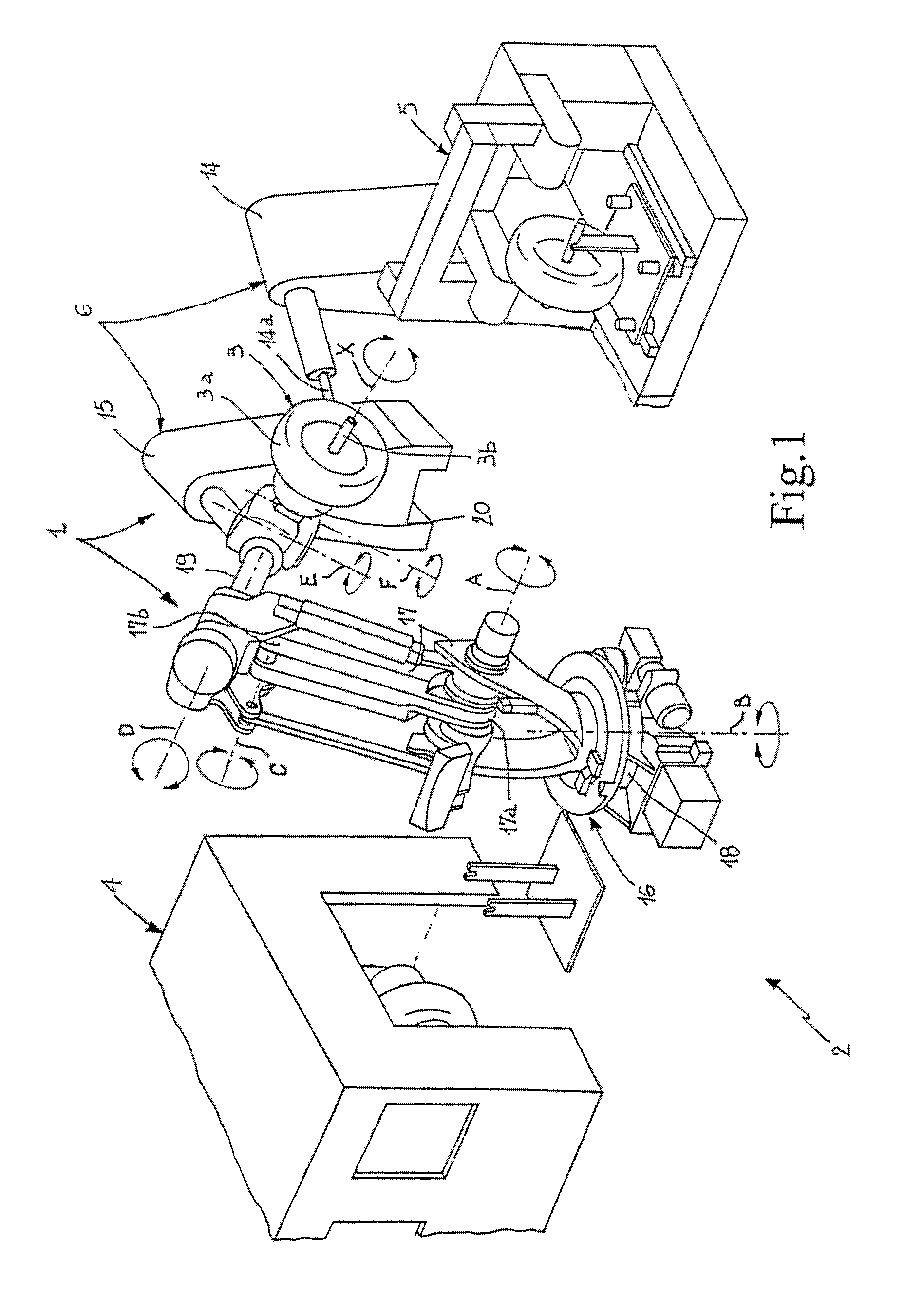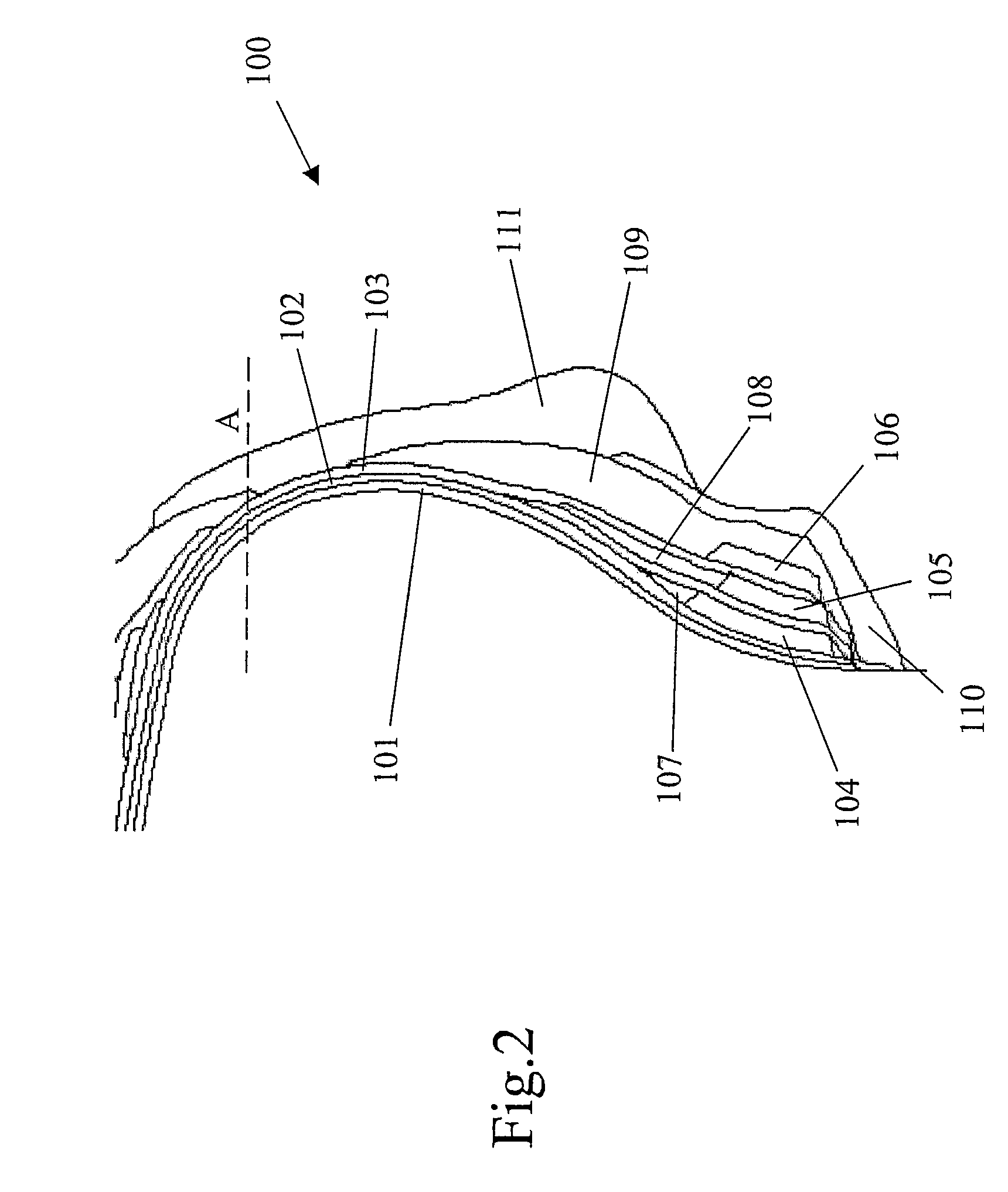Method for manufacturing a tyre
a manufacturing method and technology for tyres, applied in the field of tyre manufacturing methods, can solve the problems of difficulty in definition, problems during molding and curing, unacceptable defects and/or geometric distortions of finished tyres, etc., and achieve the effect of high degree of manufacturing flexibility
- Summary
- Abstract
- Description
- Claims
- Application Information
AI Technical Summary
Benefits of technology
Problems solved by technology
Method used
Image
Examples
Embodiment Construction
[0044]With reference to FIG. 1, a preferred embodiment of an apparatus for manufacturing tyres for vehicle wheels has been generally identified by reference numeral 1. Apparatus 1 is associated with a plant 2 intended for producing tyres for vehicle wheels or executing a part of the workings of the tyre production cycle.
[0045]Within these workings, manufacturing of different tyre components is included, which components are obtained directly on a substantially rigid toroidal support 3 having an outer surface 3a, 3b, the shape of which substantially matches the inner shape of the tyre itself. For such purpose, plant 2 may generally comprise a plurality of work stations 4, 5, 6 each intended for carrying out at least one of said workings aiming at manufacturing the tyre on the toroidal support 3.
[0046]In more detail, in the example shown in FIG. 1 and described by way of example only, a portion of plant 2 is shown which is arranged to form a carcass structure on the outer surface 3a, ...
PUM
| Property | Measurement | Unit |
|---|---|---|
| volume | aaaaa | aaaaa |
| volume | aaaaa | aaaaa |
| volume distribution | aaaaa | aaaaa |
Abstract
Description
Claims
Application Information
 Login to View More
Login to View More - R&D Engineer
- R&D Manager
- IP Professional
- Industry Leading Data Capabilities
- Powerful AI technology
- Patent DNA Extraction
Browse by: Latest US Patents, China's latest patents, Technical Efficacy Thesaurus, Application Domain, Technology Topic, Popular Technical Reports.
© 2024 PatSnap. All rights reserved.Legal|Privacy policy|Modern Slavery Act Transparency Statement|Sitemap|About US| Contact US: help@patsnap.com










